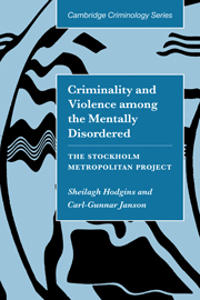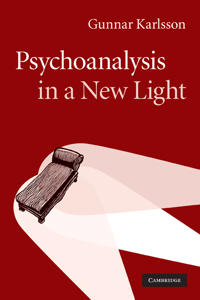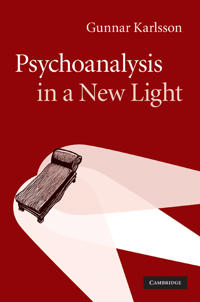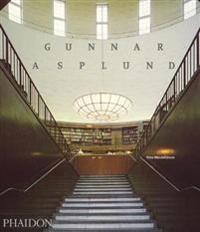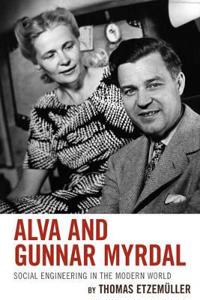Criminality and Violence Among the Mentally Disordered (Häftad)
avSheilagh Hodgins, Carl-Gunnar Janson
ISBN: 9780521111355 - UTGIVEN: 2009-05In recent years it has become apparent that mentally ill people are at increased risk of committing crimes of violence. Most writing and research about crime and mental disorder has focused necessarily on the immediate problems which confront clinicians and law makers - assessing and managing the f[...]
Psychoanalysis in a New Light (Häftad)
avGunnar Karlsson
ISBN: 9780521122443 - UTGIVEN: 201006What kind of a science is psychoanalysis? What constitutes its domain? What truth claims does it maintain? In this unique and scholarly work concerning the nature of psychoanalysis, Gunnar Karlsson guides his arguments through phenomenological thinking which, he claims, can be seen as an alternative[...]
Psychoanalysis in a New Light (Inbunden)
avGunnar Karlsson
ISBN: 9780521198059 - UTGIVEN: 2010-06What kind of a science is psychoanalysis? What constitutes its domain? What truth claims does it maintain? In this unique and scholarly work concerning the nature of psychoanalysis, Gunnar Karlsson guides his arguments through phenomenological thinking which, he claims, can be seen as an alternative[...]
An Economic History of Europe (Pocket)
avKarl Gunnar Persson
ISBN: 9780521549400 - UTGIVEN: 201003This concise and accessible introduction to European economic history focusses on the interplay between the development of institutions and the generation and diffusion of knowledge-based technologies. The author challenges the view that European economic history before the Industrial Revolution was[...]
Biodiversity in Dead Wood (Pocket)
avJogeir N. Stokland, Juha Siitonen, Bengt Gunnar Jonsson
ISBN: 9780521717038 - UTGIVEN: 201205Fossils document the existence of trees and wood-associated organisms from almost 400 million years ago, and today there are between 400,000 and 1 million wood-inhabiting species in the world. This is the first book to synthesise the natural history and conservation needs of wood-inhabiting organism[...]
An Economic History of Europe (Inbunden)
avKarl Gunnar Persson
ISBN: 9780521840095 - UTGIVEN: 2010-03-08Self-organised Criticality (Inbunden)
avGunnar Pruessner
ISBN: 9780521853354 - UTGIVEN: 2012-08-30An overview of results and methods, written for graduates and researchers in physics, mathematics, biology, sociology, finance, medicine and engineering.[...]
Biodiversity in Dead Wood (Inbunden)
avJogeir N. Stokland, Juha Siitonen, Bengt Gunnar Jonsson
ISBN: 9780521888738 - UTGIVEN: 201205Fossils document the existence of trees and wood-associated organisms from almost 400 million years ago, and today there are between 400,000 and 1 million wood-inhabiting species in the world. This is the first book to synthesise the natural history and conservation needs of wood-inhabiting organism[...]
Gunnar Asplund (Inbunden)
avJones, Peter Blundell
ISBN: 9780714839769 - UTGIVEN: 2006-03-12- Comprehensive monograph of Erik Gunnar Asplund (1885-1940), Sweden's pre-eminent architect and a central figure in the development of Scandinavia's architectural modernism
- Offers an in-depth analysis of Asplund's life and work, in particular his collaborations with architect Sigurd Lewerentz<[...]Gunnar Asplund (Pocket)
avPeter Blundell Jones
ISBN: 9780714863153 - UTGIVEN: 201201A contemporary of Walter Gropius and Le Corbusier, Gunnar Asplund pursued a unique architecture that displayed a blend of classical tradition, vernacular architecture and Modernism. Above all, he achieved a sensitive understanding of the relationship between architecture and its surrounding landsca[...]
Alva and Gunnar Myrdal (häftad)
ISBN: 9780739198742 - UTGIVEN: 2016-08As two of the leading social scientists of the twentieth century, Alva and Gunnar Myrdal tried to establish a harmonious, "organic" Gemeinschaft [community] in order to fight an assumed disintegration of modern society. By means of functionalist architecture and by educating "sensible" citizens, dis[...]
Organizing European Space (Häftad)
avChrister Jonsson, Sven Tagil, Gunnar Tornqvist
ISBN: 9780761966739 - UTGIVEN: 200005This book combines perspectives from political science, history and geography to provide a comprehensive introduction to 'Europe' or European space as we understand it today. Central to the book is the phenomenon of the sovereign state and the question of alternative ways of organizing Europe politi[...]
Controlling Design Variants (Inbunden)
avAnna Ericcson, Gunnar Erixon
ISBN: 9780791801505 - UTGIVEN: 199901Gunnar Myrdal and America's Conscience (Häftad)
avWalter A. Jackson
ISBN: 9780807844601 - UTGIVEN: 1994-02Gunnar Myrdal's "An American Dilemma" (1944) influenced the attitudes of a generation of Americans on the race issue and established Myrdal as a major critic of American politics and culture. Walter Jackson explores how the Swedish Social Democratic scholar, policymaker, and activist came to shape a[...]
Erik Gunnar Asplund
ISBN: 9780815378211 - UTGIVEN: 2018-07Taking an interdisciplinary approach, weaving together art, philosophy, history, and literature, this book investigates the landscapes and buildings of Swedish architect Erik Gunnar Asplund. Through critical essays and beautiful illustrations focusing on four projects, the Woodland Cemetery, the Sto[...]
Erik Gunnar Asplund (häftad)
ISBN: 9780815378228 - UTGIVEN: 2018-07Taking an interdisciplinary approach, weaving together art, philosophy, history, and literature, this book investigates the landscapes and buildings of Swedish architect Erik Gunnar Asplund. Through critical essays and beautiful illustrations focusing on four projects, the Woodland Cemetery, the Sto[...]
The Independent Film Producer's Survival Guide: A Business and Legal Sourcebook (Häftad)
avGunnar Erickson, Harris Tulchin, Mark Halloran
ISBN: 9780825637230 - UTGIVEN: 201001Eugenics and the Welfare State (Häftad)
avGunnar Broberg, Nils Roll-Hansen
ISBN: 9780870137587 - UTGIVEN: 200509Controlling Design Variantsl Modular Product Platforms (Häftad)
avAnna Ericsson, Gunnar Erixon
ISBN: 9780872635142 - UTGIVEN: 1999-09The Political Element in the Development of Economic Theory (Häftad)
avGunnar Myrdal
ISBN: 9780887388279 - UTGIVEN: 1990-05198: How I Ran Out Of Countries - By Visiting Random People on Incredible Travels to Every Country in the Whole Wide World (Häftad)
avGarfors Gunnar
ISBN: 9780996478595 - UTGIVEN: 2015-07Consumer Lending in France and America (Pocket)
avGunnar Trumbull
ISBN: 9781107693906 - UTGIVEN: 2014-08Why did America embrace consumer credit over the course of the twentieth century, when most other countries did not? How did American policy makers by the late twentieth century come to believe that more credit would make even poor families better off? This book traces the historical emergence of mo[...]
Wärend Och Wirdarne: Ett Försök I Svensk Ethnologi Af Gunnar Olof Hyltén-Cavallius, Volume 2 (häftad)
ISBN: 9781149218488 - UTGIVEN: 2010-05

